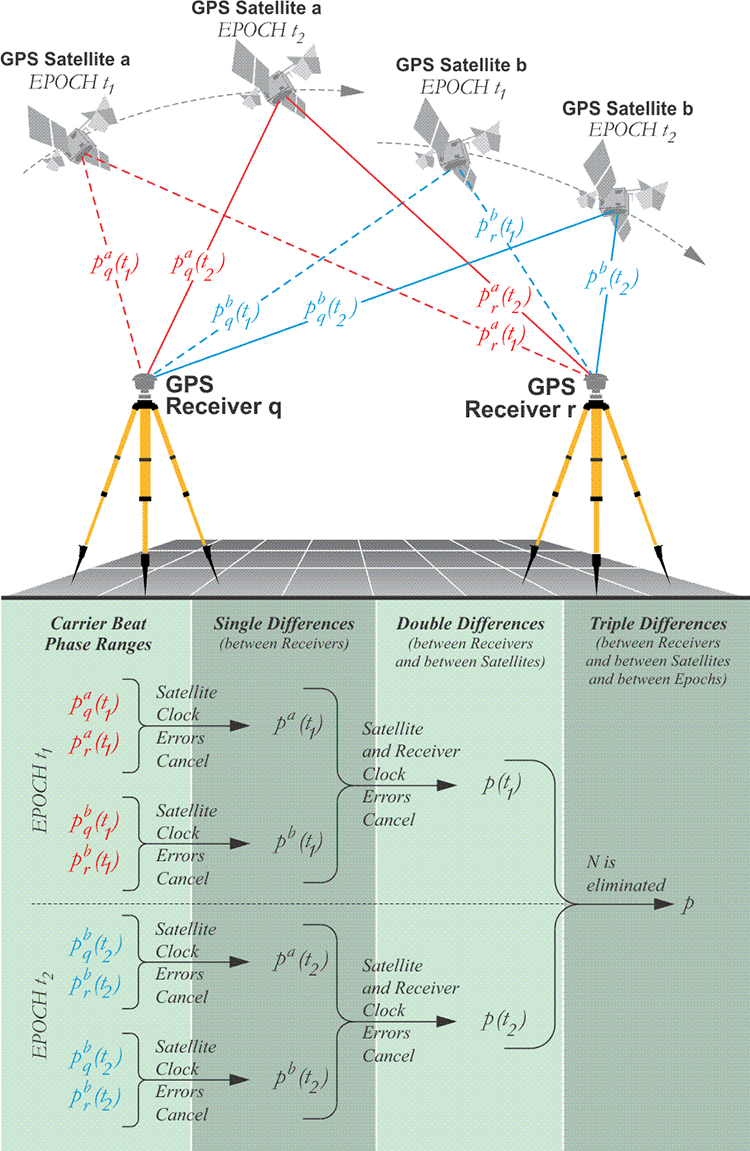
In carrier phase post-processing, the first solution is typically a simple pseudorange single point position at each end of the baseline. These code solutions provide the approximate position of each of the two receiver’s antennas. Each position establishes a search area, a three-dimensional volume of uncertainty, the size of which is defined by the accuracy of the code solution. The correct position of the receiver is contained within it somewhere. The computational time required to find it depends on the size of the search area. Next, cycle slips are addressed because the subsequent instantaneous phase jumps will defeat the upcoming double differencing. Triple differencing is not as affected by cycle slips and is insensitive to integer ambiguities, so it typically precedes double differencing and is used to clean the data by detecting and repairing cycle slips. In fact, pre-processing using the triple difference to weed out and fix cycle slips is one of its primary appeals. As to detection, when a large residual appears in one of the triple difference’s component double differences, it is likely caused by a cycle slip, so the satellite pairs can be sorted until the offending signal is singled-out and repaired. Triple differencing can also provide first positions for the receivers. While the receiver coordinates that result are usually more accurate than pseudorange solutions, their geometric strength is weak and not sufficiently accurate for determining short baselines. Nevertheless, they provide a starting point for the more accurate double-difference solutions that follow.